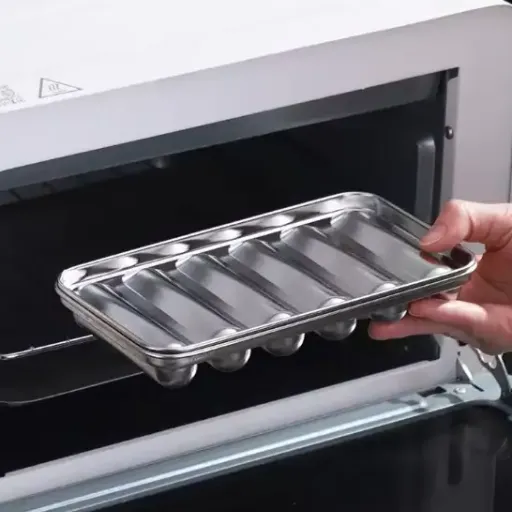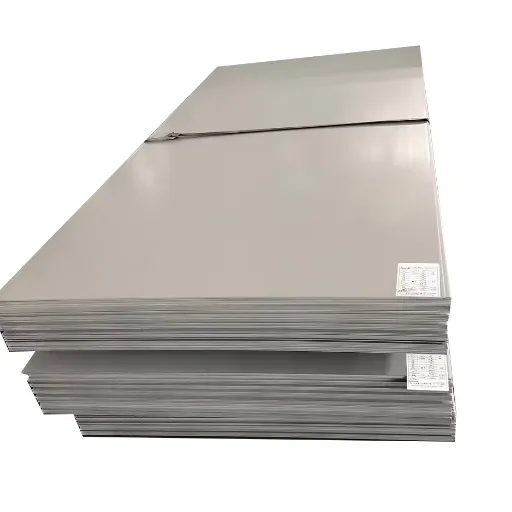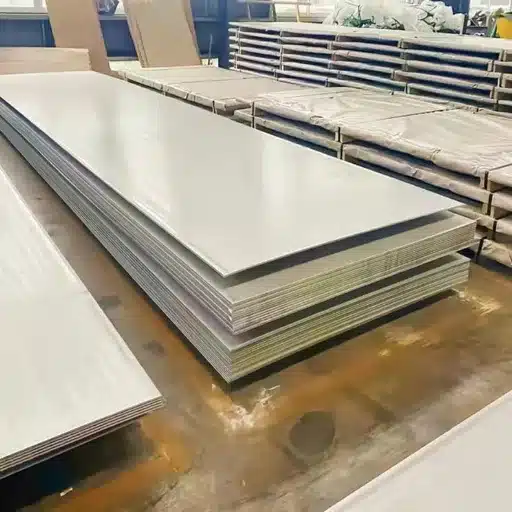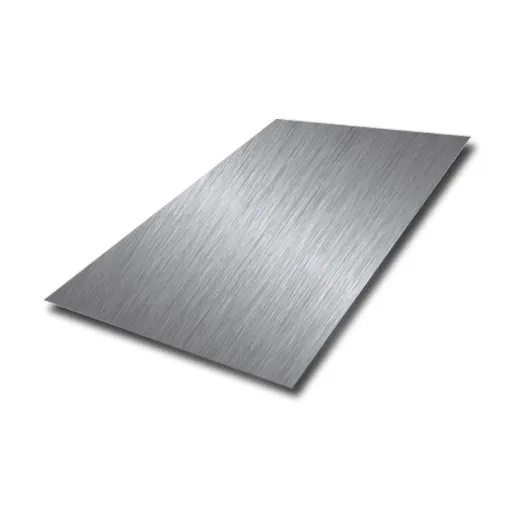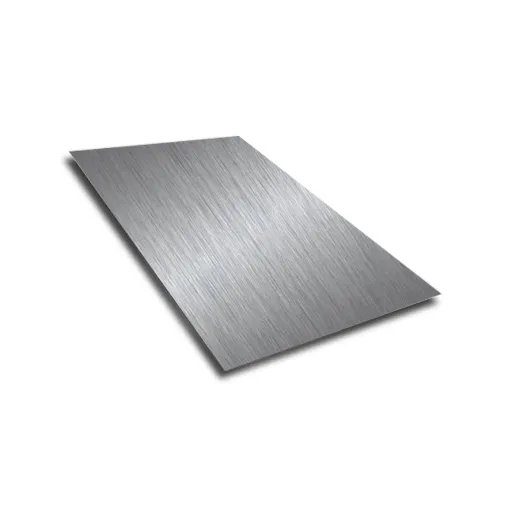More than anything, an iron door tends to generate misconceptions about the microwave. Most of us were pre-conditioned to believe that metal and microwave systems do not go to the same school. But is that really true? Design arrest and technological push forward have yielded stainless steel containers for microwave, which indeed acts as a convenient and durable option to heat meals. This article gets into the concepts and safety surrounding microwave and stainless steel; it goes further to destroy some of the myths and shows how some containers are designed to be microwave-friendly. So if you have ever been a bit unsure about whether your stainless steel ware can go into a microwave, it is about time you set out to unearth some facts!
Introduction to Stainless Steel and Microwaves
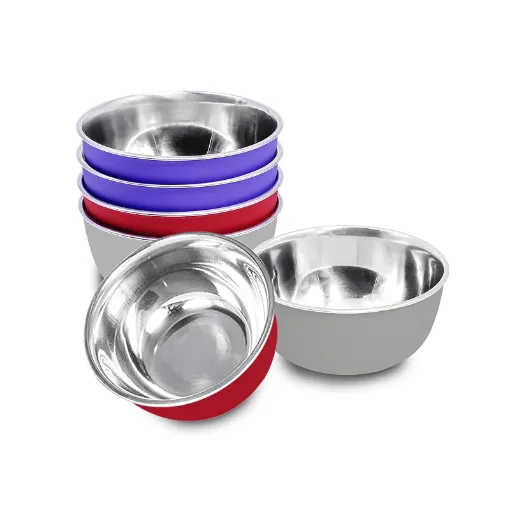
Overview of Microwave Technology
Microwave ovens operate by microwaves emitted by the oven causing water molecules in food to vibrate rapidly and create heat through friction, thus cooking or reheating the food. They are emitted in the oven cavity and absorbed by food containing water, fats, or sugars that convert the energy efficiently into heat. It is for this reason that the microwave is a fast and convenient way to prepare meals.
However, with materials like stainless steel, the interaction with microwave energy is rather complicated. Being a conductive metal, stainless steel reflects microwaves instead of absorbing them. Energy is reflected off and, instead of providing for a uniform microwave energy distribution within the cavity, this may actually result in sparks, in overheating, and hence in damage to the microwave. It is for this reason that generally stainless steel containers are not considered good for microwave use.
In certain circumstances, these stainless steel containers may actually work in microwaves and safely carry out their function, even though most steel containers in general cannot be used in microwave ovens. Classified as microwave safe, specially designed stainless steel containers retain in themselves certain properties that prevent such occurrences. These containers possess design peculiarities relevant specifically for safety and compatibility with microwave technology. It is always advised that one review manufacturer directions for any stainless steel product prior to using that product in a microwave oven. Safety considerations and proper usage practices will help avoid accidents and also prevent stress on the appliances themselves.
What Makes a Container Microwave-Safe?
Microwave-safe containers are those made from materials that allow microwave energy to permeate through them without causing harm or altering the container itself. The glass, ceramic, or plastic commonly labeled “microwave-safe” do not absorb microwaves that may lead to overheating or melting. The container should always be confirmed for microwave suitability by looking for a “microwave-safe” label.
Basically, glass and ceramic are considered the best choices due to their heat-resistant properties and the fact that they do not leach chemicals into food when heated. When using plastic containers, one should always check for microwave-safe certification since some plastics do tend to release harmful chemicals at elevated temperatures. These include any containers that have a metallic component; the metal will reflect microwave energy, which might give rise to sparks that could damage the microwave or become safety hazards.
Follow manufacturer instructions that may be necessary for any container, if one wants to be very careful. Certain types of microwave-safe containers do have limitations, such as not being suitable for prolonged heating or certain types of food. Ensuring that the container does not bear any cracks, chips, or damages also maintains safety and avoids uneven heating in the container. So, therefore, to enhance safety and cooking convenience in the microwave, one should aim to use a microwave-safe container properly.
Importance of Understanding Microwave Safety
Understanding microwave safety is very important in ensuring the safety of the user and the product’s cooking quality. If the microwave is not used properly or is being operated in unsuitable containers, it can cause personal harm by way of burns, or it may ignite a fire, or it would be indeed hazardous. Being aware of these hazards helps in utilizing microwaves with precaution.
For example, one aspect of microwave safety is appropriate containers and cookware. Only microwave-safe materials should be approved. If specific plastics or metals or other materials are irradiated, they heat or melt or spark and create a dangerous situation. Always check labels or instructions that say a particular container is microwave safe and do not use damaged containers. Such containers could lend to more food contamination and uneven heating.
Besides this, an adequate understanding of microwave safety will help to keep the microwave good for a long time. Cleaning regularly, according to the manufacturer’s instructions, and using correct settings for specific types of food will help the microwave work best over time. Safety considerations and proper usage ensure the best cooking and safety for the user.
Common Misconceptions About Using Stainless Steel in Microwaves
Myth: All Stainless Steel Containers are Unsafe
Depending on one’s personal perspective, one of the most widely held misconceptions regarding the use of microwaves is that all stainless steel containers are not safe. It is true that there might be a risk in certain odd cases with stainless steel, but this whole statement should not be taken at face value. The greater danger arises if metal units are misused in the microwave: such items reflect microwaves, causing sparks or arcing, and this can either cause damage to the appliance or become a fire hazard. On the other hand, not all stainless steel items are necessarily dangerous-it really depends on what exactly the container is like and how it interacts with the microwave electromagnetic waves.
With microwave-safe technologies evolving, stainless steel containers have been developed especially for microwave use. These containers are coated with microwave-compatible substances or are designed to avoid electromagnetic interference. Some manufacturers even claim to have succeeded in coating stainless steel mugs in such a way that they will not spark, and are thus safe for warming a beverage. The key is to read the specifications and confirm that they are microwave-safe.
Size and shape of the stainless steel item form an important aspect. Objects having sharp edges or awkward shapes are more prone to sparks than smooth and round designs. Likewise, location within the microwave is taken into consideration: avoiding placing stainless steel items on microwave walls or any other surfaces will minimize the risk. Above all, it would do well if manufacturer’s instructions regarding both microwave and containers in question were adhered to. Users can disperse this myth and responsibly make better decisions about using stainless steel in microwaves through caution balanced with knowledge.
Fact: When Can Stainless Steel Be Used in the Microwave?
Stainless steel can sometimes be used in the microwave, but several restrictive conditions have to be satisfied. Many modern microwaves are actually designed with safety measures that protect some stainless steel items-from microwave safe travel mugs to accessories-from being damaged or sparking. Special attention is paid to designing such items to prevent metal-to-microwaves interaction and avert any hazard. It is, however, very important that we check to verify whether the stainless steel product states it is microwave-safe before using it.
One thing to note is that the smooth surface does not have sharp edges or exposed seams, hence it will hardly create any sort of arcing or sparks in steel. Additionally, it may occasionally facilitate energy absorption by some cookware in microwave heating applications when small flat stainless steel parts are used. Despite that, one should not abuse the use of stainless steel inside microwaves, as improper use still poses potential hazards.
Current and exact guidelines from manufacturers as well as care labels on products remain essential in deciding whether a stainless steel item can be safely used in a microwave. Armed with this knowledge, users can be able to determine when it is safe to use stainless steel and enjoy its benefits in some situations.
Understanding Conductivity and Its Effects
According to the definition, conductivity is the ability that any material has to allow for the efficient transfer of either heat or electricity. It has great importance when considering the interaction materials have with other forms of energy, such as microwave energy. Below are five facts and data concerning conductivity and its resultant effects:
| Conductivity Type | Description |
|---|---|
| Thermal Conductivity | These substances have an especially high thermal conductivity and thus transfer heat rather fast. Stainless steel is a good example of a conductor of heat, and it is commonly used in cookware. Its use in microwave ovens, however, can pose certain hazards. |
| Electrical Conductivity | Metals like copper and aluminum are better conductors of electricity. Electric currents pass through them with practically no loss of energy; the other side of this coin is that Yankee wire can generate sparks if used in a microwave. |
| When Conducted In Microwave | Inside the microwave, the microwave radiation will be reflected off the conductive material, with the possibility of uneven heating or even damaging the components of the microwave oven if not simply placed inside. |
| With Insulating Materials | Insulating materials resisted heat and electricity. Therefore, under certain conditions, ceramics, plastics, etc., could be employed in microwave heating. |
| Thickness of Materials | Thickness gives a conductant material a particular property when interacting with energy. A thin metal layer could heat up faster, thereby increasing the chance of sparking in microwaves, in contrast to thicker, and more stable objects. |
These factors make somewhat complicated conductivity itself; hence, good disposal and choice of materials remain essential for efficiency and safety.
Scientific Explanation: How Stainless Steel Can Be Microwave Safe
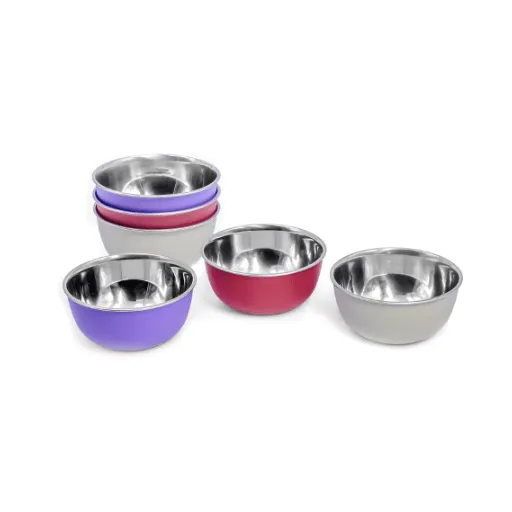
The Role of Stainless Steel Composition
Microwave safety of stainless steel depends on its composition: several elements are combined to strike a balance between conductivity, durability, and resistance to heat. Listed below are five major ingredients commonly present in stainless steels, details of the respective roles served by each element:
| Element | Symbol | Role in Stainless Steel |
|---|---|---|
| Iron | Fe | Iron, being the principal element in stainless steel, provides strength and the structural steel framework. Due to its ferromagnetic nature, it farms how stainless steel reacts in the microwave environment. |
| Chromium | Cr | Chromium is an essential component, usually accounting for 10.5% or more of stainless steel by weight. It produces a protective thin oxide layer on the surface for corrosion resistance and gives microwave radiation the harmful action of being absorbed and converted into heat by the metal. |
| Nickel | Ni | Adding from least to highest amounts, often 8-10% in regular grades like 304 stainless steel, nickel helps to impart durability to stainless steel, working against thermal expansion to keep stable under microwave applications. |
| Carbon | C | Very small amounts of carbon usually present in stainless steel, mainly enhancing the hardness and strength of the stainless steel. The higher the carbon content, the more capacity it has to absorb energy and heat up during microwaving. |
| Manganese | Mn | Manganese is added to increase strength and resistance to impact. It also increases some workability in manufacture. Its interaction with microwaves, however, is very minimal compared to other elements. |
In this way, by adjusting the alloy composition in a very specific way, manufacturers engineer stainless steel grades with varying microwave compatibility, thus serving the safety and performance of certain applications.
Microwave Energy and Metal Interaction
Microwaves interacting with metals produce complicated electromagnetic effects. Metals reflect microwave energy because of the presence of free electrons, unlike glass or ceramic materials through which microwaves can pass for uniform heating. Such reflection causes energy build-up inside the oven and may cause arcing or sparking if metal has sharp edges or is poorly placed.
Moreover, shape, thickness, and surface texture of metals greatly influence their interaction with microwave energy. Smooth surfaces and continuous shapes such as rounded edges tend to maintain the integrity of the electromagnetic field, reducing the risk of sparking. These factors, thin or crumpled metals such as aluminum foil, on the other hand, display instability and unpredictable patterns of energy reflection.
Advances in microwave-safe technology encompass special metal alloys and coatings that make certain metallic containers microwave-worthy. These develop along the lines of electromagnetic reflection and heat distribution so that safe microwave use is ensured and structural integrity of materials maintained.
Safe Design Features of Microwave-Safe Stainless Steel Containers
Microwave-safe stainless steel containers are invented with special manufacturing techniques that ensure safe relations with microwaves. Unlike metals that generally cause electromagnetic disturbance or crazing, these containers have been created using alloys and coatings that appropriately manage the microwave energy. Such innovations help the containers in balancing electromagnetic reflection and heat absorption so that food will be equally warmed without melting away the container itself. Smooth stainless steel surfaces also help in negating any chance of arcing, which is likely to form near a sharp edge or a high-energy spot.
Counted among the most important design features of such containers is their structural feature, with many having rounded edges and a uniform surface finish. This helps avoid the formation of energy points that might cause sparking or uneven heating. The inner walls may be coated or finished with certain non-metallic materials that help transmit heat into the food while reducing direct metal-to-microwave interactions. Moreover, to promote safety and efficient cooking, steam release mechanisms are incorporated into these containers. Such measures include small vents or pressure-resistant lids to release steam before solid pressure builds up.
Otherwise, a mild fuss might ensue, should you find yourself with a metal container in the microwave. On the other side, stainless steel microwave-safe containers undergo the most stringent tests and certifications to validate compliance with international safety standards. These tests aim to gauge the performance of stainless steel during different conditions, such as extended microwave irradiation and temperature shocks. The research is now focusing on giving the final touch to improve design work in developing green coatings and lighter materials, which maintain the functional integrity of the containers. Modern kitchen implements offer stainless steel containers as a strong, green option above ground and along with the consumer request for safe and efficient cookware.
Practical Tips for Using Stainless Steel in Microwaves

Choosing the Right Stainless Steel Containers
If I were to select stainless steel containers for use in microwave ovens, I would start by assessing whether this container was deemed microwave-safe. Many stainless steel items tend to be very durable, yet others are not meant for a microwave and could pose safety hazards when exposed to microwave radiation. Therefore, on purchase, I look for some label or manufacturer specifications that clearly state the container is microwave-compatible.
Next comes the dimension and design of these containers. Basically, I want shallow bases with straight sides. That way, heat tends to be swept away evenly and cooking irregularity is kept to a minimum. If there are extra parts such as lids, I make sure these are microwave-safe materials, such as BPA-free plastics, or silicone, so as not to damage them and ensure they’re fully functional.
Finally, I weigh in the consideration of practicality around these containers for my day-to-day requirements- options with lids that can fit tightly for storing and carrying foods, as well as containers that are dishwasher-safe to make the cleaning an easy matter. These conditions also ensure that, while the stainless steel containers I have finally chosen may be microwave safe, they are still anything but inconvenient for my hectic schedule.
Best Practices for Microwaving with Stainless Steel
Using microwave stainless steel requires careful precaution for safety and efficiency. Some containers may reflect microwave energy and cause sparking, but a lot of modern microwaves and containers are designed with this risk in mind when they are used appropriately. Below are some dos and don’ts:
- ✓ Check Manufacturer Guidelines: As a rule, check the microwave and container manufacturers’ manual to see if stainless steel products are explicitly labeled microwave safe.
- ✓ Avoid Completely Sealing the Container: Ensure the lid is either removed or just barely ajar when heating food so that pressure does not build up inside and steam may escape.
- ✓ Place Containers Properly: Always center stainless steel containers on the microwave turntable so that heating is uniform and keep them off the microwave walls.
- ✓ Set Shorter Heating Times: Use short intervals and lower power to prevent overheating, while carefully observing the heating process.
- ✓ Safe Test: Do a small test with a microwave-safe stainless container, with a small amount of food or water, to observe any unusual sparks or inconsistencies in heating.
- ✓ No Damaged Containers: Do not use any microwave-safe container that shows visible dents or scratches because this causes arcing inside the microwave.
Following these instructions, and staying informed about the latest advancements in microwave and container technology, allow you to safely microwave with stainless steel while ensuring the best performance.
Alternatives to Stainless Steel for Microwave Use
Safe and efficient microwave use is a hallmark of stainless steel, but with the treatment of microwave materials, some other alternatives stand out in this respect:
| Material | Description & Benefits |
|---|---|
| Glass | Containers of borosilicate glass are a microwave-friendly contender. These containers are capable of withstanding thermal shocks, enabling reheating or cooking operations to be performed safely. Moreover, glass does not emit any chemicals into the food, thus acts as an excellent medium for hygienic cooking, coupled with its easy cleaning. |
| Ceramic | Microwave usage is safe for Arizona ceramics as long as they remain unglazed or are glazed with a microwave-safe glaze. These materials excel at evenly distributing heat, avoiding the occurrence of hot spots during warming. |
| Silicone | Food-grade silicone containers are flexible and super lightweight, allowing them to easily take the microwave route. They maintain heat resistance and high-temperature challenges, making them an excellent option for cooking and reheating. |
| Microwave-Safe Plastics | Some kinds of BPA-free plastic are made for microwave usage. Yet, it will be necessary to check the label of the plastic to ensure that it meets the safety standards for being in contact with food at elevated temperatures. |
| Paper Products | Such products include parchment paper, paper towels, and microwave-safe paper plates, which can be used for short duration cooking or reheating. Be on guard against anything that may have coatings, as these may just melt and contaminate the food with harmful chemical constituents. |
Every material comes with its own pros and cons, depending on the type of food you are heating or the length of time required for heating. Choosing these alternatives would both increase safety and allow efficient heating while preserving food nutrition.
Safety Considerations When Using Stainless Steel in Microwaves
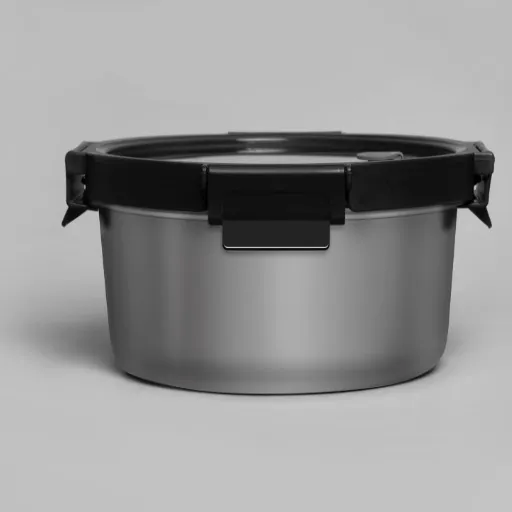
Avoiding Sparks and Fires
When attempting any microwave cooking with stainless steel, take great care as sparks and fires can result. Stainless steel is metal, and there are hazards if placed inside microwaves without caution. Microwaves emit electromagnetic waves, so water, fats, and other molecules in food are heated. Steel, like stainless, is able to bounce back these waves and may produce hotspots and sparks, even causing pesky fires in irresponsible hands. To be safe, check that the stainless steel utensils have smooth edges and no scratches that may worsen sparks.
Beware of stainless steel items’ size and shape. Thin metal items such as a fork or decorative foil may cause sparks because they induce macroelectric currents in microwaves. Thicker and more uniformly shaped stainless steel may be safer in some cases but remain unsafe for regular microwaving unless marked as microwave safe by the manufacturer. Safety-wise, always rely on the label or guidance from the manufacturers; when in doubt, steer clear of stainless steel.
To further prevent accidents, it is advisable that the microwave remains under close observation whenever stainless steel is present. Never keep it unattended and learn to stop it when you hear any unusual noises or witness flashing or sparking. Regularly cleaning the interior of the microwave and checking for any damages or scratches on its surface will also aid in preventing adverse reactions while using different materials. If you follow these rules and take every precaution, you will help reduce the risks of sparks and fire, keeping yourself safe in the kitchen.
Recognizing Unsafe Stainless Steel Products
While stainless steel is popular and widely used due to its strength, corrosion resistance, and appealing aesthetics, improper or substandard manufacturing cannot be ruled out. Thus, to screen potentially unsafe stainless steel products, one should be able to detect indications of inferior quality and improper manufacturing. For example, a product that shows clear signs of rust, discoloration, or scratches on its surface at the time of purchase may just be indicating substandard quality or inappropriate alloy composition. In fact, a poor-grade stainless steel usually has insufficient chromium or nickel content because it is these two substances that impart the corrosion resistance. Besides, products that feel lightweight or flimsy may have just been forged through inferior manufacturing processes, thus losing strength and reliability.
Another factor worthy of consideration might be whether a product has been certified for certain applications that include food preparation or medical use. Stainless steel articles for such use need to comply with stringent safety regulations to ensure they are considered non-toxic and free from adverse contamination. To cite an example, 304 or 316 food-grade stainless steel is constructed so as not to leach metals or toxins into food or liquid. Take care to go through product labels and certifications signed by recognized authorities when you buy stainless steel cookware, utensils, or containers. Those items that have no documentation or exhibit unclear or vague information are considered less trustworthy, and, in essence, may even pose a risk to health.
To conclude, counterfeit stainless steel products are an increasing concern in the market. To avoid any, buy from known brands and trusted retailers. From afar, counterfeit goods often resemble their genuine counterparts, but eventually, after prolonged use, the user may be exposed to hazards such as rust, sharp edges, or structural failure. Performing regular inspections and maintenance on stainless steel products you already own may help in detecting any issues before they become major problems. Thus, keeping informed and alert will help the consumer as choices are made while shopping and increase the longevity of their stainless products.
General Microwave Safety Tips
Microwaves must be used with precaution, lest accidents occur or the appliance becomes unusable. Here are some vital microwave safety guidelines:
- Use Safe Containers for Microwave Use: Always use containers and dishes specified as microwave-safe. Avoid all metallic tools or aluminum foils because they can spark and damage the appliance. Plastic containers that are not specified for microwave use might also emit toxic chemicals during heating.
- Do Not Overheat: Overheating food or liquids can result in splattering or boiling over. Foods can be stirred halfway through the heating period and heated at low power for anything that may need delicate heating.
- Keep it Clean Diagonally: Food spills can absorb energy, thus making it inefficient and opening a remote chance of burns or fires. Clean the interior after use and wipe off grease and debris from the turntable and microwave walls.
- Pay Attention to Cooking Times: Always follow cooking times prescribed for any given food item. Overcooking results in overheating, and if extreme, can cause even a fire, mainly with dry foods or foods rich in fat.
- Inspect the Door Seal Regularly: Ensure that the microwave door is sealing properly, with no damage of any sort or material obstructing it. A bad seal could mean a chance for radiation escaping, thus becoming a safety hazard in the process.
- Never Operate When Empty: Empty operation of the microwave can destroy the magnetron, the device that heats food. Always have something inside to absorb the microwave energy.
- Use Microwave Cover: A microwave-safe cover inhibits splattering of food and keeps steam close to food for efficient cooking. Make sure it is vented so steam can escape safely.
- Supervise Children While Using the Microwave: Teach children the acceptable use guidelines and have them supervised while heating food to avoid misuse or accidents.
Being able to lower potential risks would make a lot of difference in extending safety usage in the daily routine. Stay updated and give central importance to maintenance to resolve in time. For appliance-care, always see the manufacturer’s manual or book of instructions in relevance to the operative kind of your appliance.
References
- MIT Engineering: An article explaining how metal objects, including stainless steel, interact with microwaves and the potential risks.
- Academia.edu: A PDF discussing the microwave heating behavior of fine stainless steel powders, providing insights into how electromagnetic waves interact with stainless steel.
- Johns Hopkins Public Health: A Q&A article mentioning the safety of materials, including metals, in microwaves.
- Stanford University Course Material: A document discussing the properties of stainless steel, including its microwave safety and versatility.
- World Stainless Organization: A detailed PDF on the safety and reusability of stainless steel food containers, including their microwave safety.
Frequently Asked Questions (FAQ)
Q: Microwave stainless steel safe how?
A: Stainless steel is generally considered not microwave safe as it reflects microwave radiation. Certain stainless steel food containers are designed for microwave use and offer a safe way to reheat food. Always go with a container labeled microwave-safe, and it should not have any metal edges that could cause sparks.
Q: Is microwave use suitable for stainless steel containers?
A: Normal stainless steel containers are not allowed in the microwave because they reflect microwaves and unevenly heat the food. On the other hand, fine stainless containers made specifically for microwave use can be safe enough to be used for reheating if the labeling so indicates.
Q: What do you mean by microwave safe stainless food containers?
A: Microwave-safe stainless steel containers for food are those containers for food that have been designed to withstand microwave heating. These containers are made from types of stainless steel that may or may not reflect microwaves, and when deemed microwave-safe, are safe for use in the microwave in heating foods.
Q: Why do metal objects cause sparks in the microwave?
A: Metal objects, including some types of stainless steel, can create sparks in the microwave because they do not absorb microwave radiation but instead reflect it. This reflection causes arcing, which might damage the microwave, so it is advisable not to microwave regular metal containers.
Q: Where can I find microwave-safe stainless steel food containers?
A: Microwave-safe stainless steel containers have labels stating that they are microwave-safe. The stainless steel quality should be high, and the containers should have been tested against microwave heating for sparking or uneven heating of food. Stainless steel can be used in food containers, and containers can be used in storing food; nevertheless, only those that are labeled as microwave-safe should be used for reheating food. Regular stainless steel containers should never be placed in a microwave because the food may not heat evenly.
Q: What considerations should I make when using stainless steel in a microwave?
A: If you are planning to use stainless steel in a microwave, make sure the container is the one designed for microwave use. Do not use regular stainless steel containers, as they will reflect microwaves and cause sparks or uneven heating of food.
Q: What are safe materials to store food for microwaving?
A: Materials that are generally considered safe for storing food for microwaving are microwave-safe glass or ceramic, as well as some high-grade stainless steel containers designed explicitly to withstand microwave treatment. It is always good to read the labeling confirming the container’s compatibility with microwave heating.
Q: How does one ensure that food is safe in the use of a microwave?
A: To ensure food safety using a microwave, always use microwave-safe containers. Never put metals in the microwave, such as regular stainless steel, as this can cause sparks. Also, make sure the food is heated uniformly; otherwise, there will be cold areas where bacteria can grow.
This article provides comprehensive information about microwave-safe stainless steel containers. Always follow manufacturer guidelines and prioritize safety when using any containers in the microwave.

